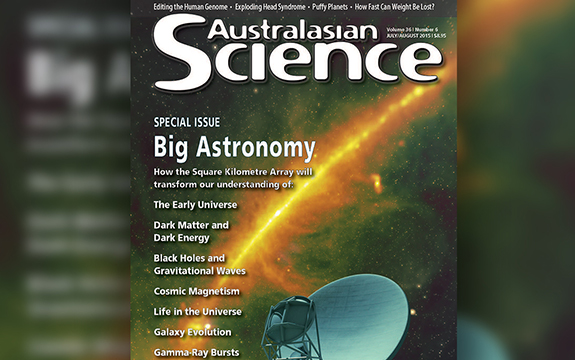Big Astronomy: what the SKA will tell us about the Universe

In Summary
The Square Kilometre Array (SKA) is an unprecedented international collaboration that will address some of the most fundamental questions of modern science.
The collaboration will see the construction of the world’s largest and most sensitive radio telescope in Murchison in Western Australia and the Karoo region of South Africa.
Composed of up to a million small antennas spread over great distances, the SKA will transform radio astronomy, according to Swinburne University of Technology astronomer Dr Willem van Straten.
“The SKA project will enable astronomers to monitor the sky in unprecedented detail and produce high-resolution images of the radio sky.
“It could unlock some of the Universe’s secrets, provide clues to the origin of dark energy and directly detect gravitational waves,” Dr van Straten said.
Swinburne’s involvement with the SKA project is very broad. It ranges from participation on the working groups that set the scientific objectives of the project to designing the instrumentation that will be built for the telescope.
Dr van Straten has guest edited a special edition of Australasian Science, bringing together articles from researchers and engineers from across Australia and New Zealand that provide an overview of the scientific questions that astronomers hope to answer using the SKA.
“These questions probe the depths of human curiosity, from the origin of our Universe and the nature of space and time to the evolution of galaxies and the emergence of intelligent life forms,” Dr van Straten said.
Because of the scale and nature of the SKA project, it is being designed and developed in stages, beginning with precursor telescopes like the South African MeerKAT, the Murchison Widefield Array and CSIRO’s Australian SKA Pathfinder.
Construction of the first phase of the SKA will begin in 2018.
Australasian Science is in store now or you can subscribe to the magazine.
Interested in studying Science at Swinburne? Find out more on our website.

